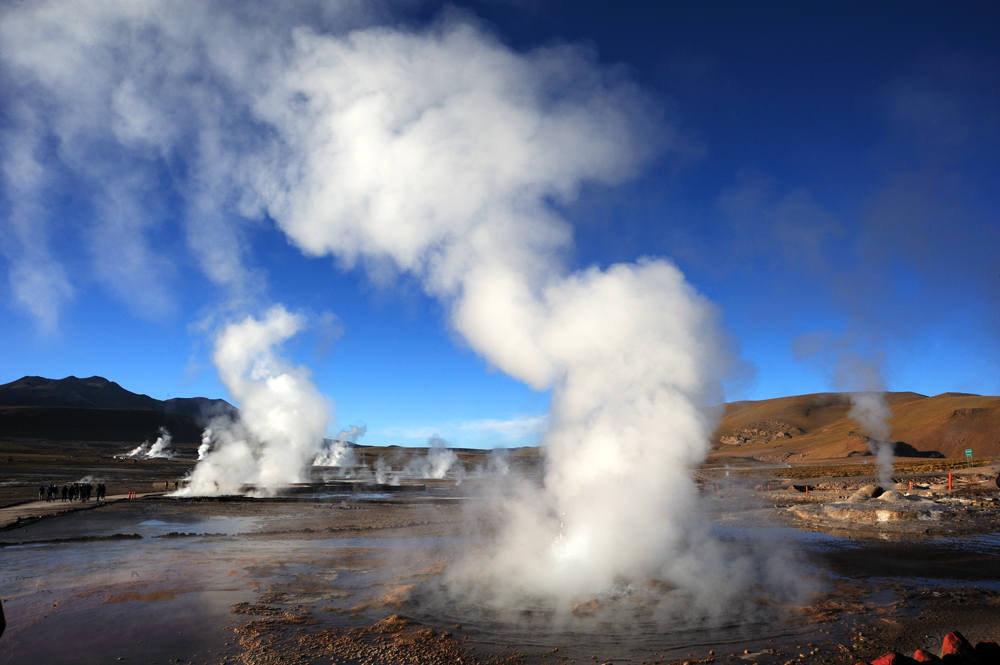
Atacama. San Pedro and Laguna Cejar
After Laguna Cejar we decided that it is time to visit some place with higher elevation. We choose Geyser Valley El Tatio. It locates north of San Pedro, near the border with Bolivia. It is the edge of Altiplano with an elevation between 4200 and 4600 meters. This geyser valley is third in the world by size after Yellowstone and Kamchatka Geyser Valley, and the biggest in the South Hemisphere. It has about 70 geysers and more than 300 hot springs. El Tation locates at the base of volcanic system Tatio and lives on it.
There are 80 kilometres between San Pedro and El Tation, but the road takes at least two hours because 80% of it is an awful unpaved road with washboards, collapses and landslides. It is not pleasant driving, especially because the way to geysers should be done in the dark. For some reasons, the geysers work only in the early morning. At 7 am they start slow down and at 8 am just some bubbling lefts. Down starts after 6 am, so to see active geysers you should drive in the dark. Well, on the other hand, it is not so scary (at least first time), because you don’t see where you can fall.
A lot of tourists every day visit El Tation and pay money for it, but the idea to repair the road never come to mind. Then again, it is typical for Chile.
Last ten kilometres is a perfect paved road. Maybe promises, maybe joke. The sign says to be afraid of seagull in helmets.
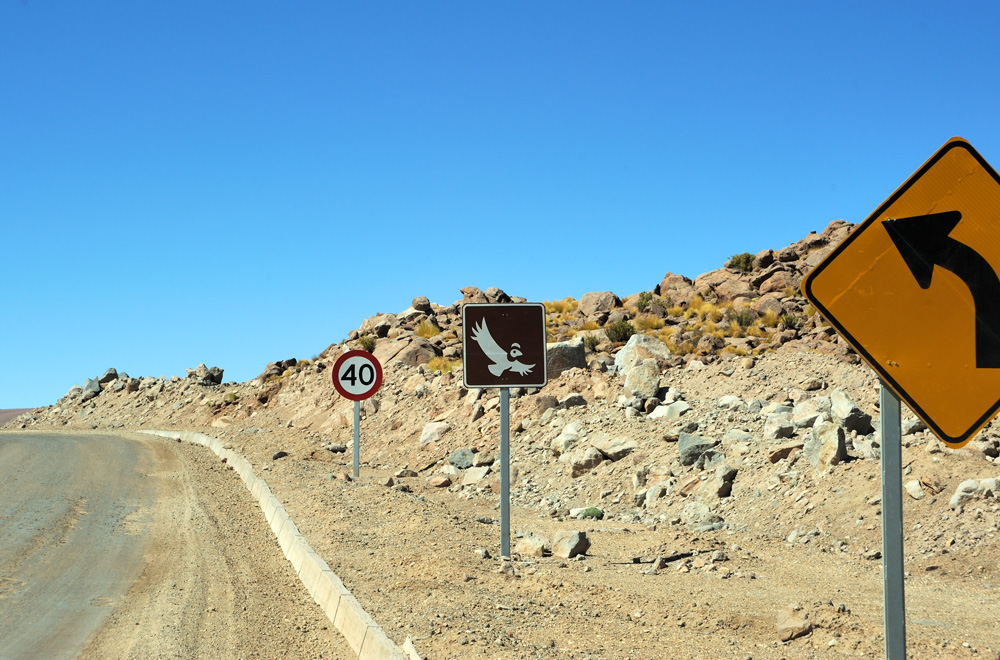
The announcement is mesmerising.
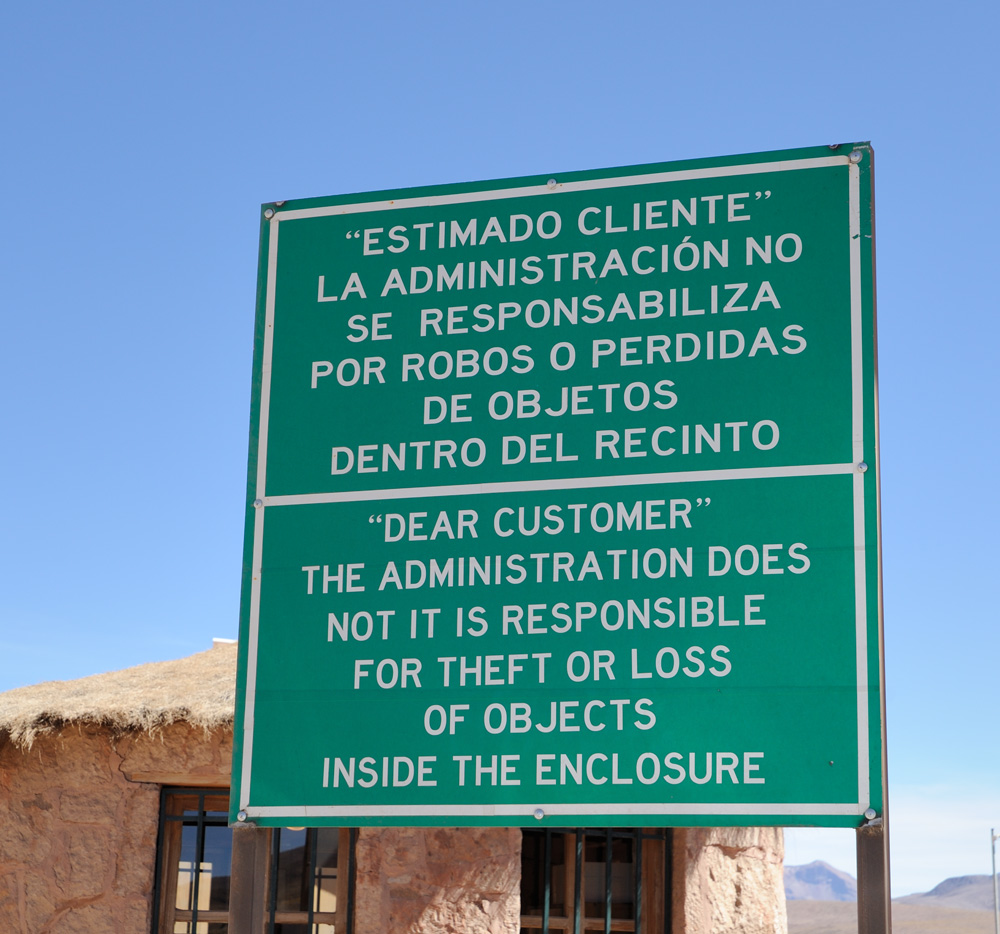
On the place. -10C, elevation in work. I forgot boots in the hotel and jumping around geysers in sandals trying not to freeze completely until sunrise.
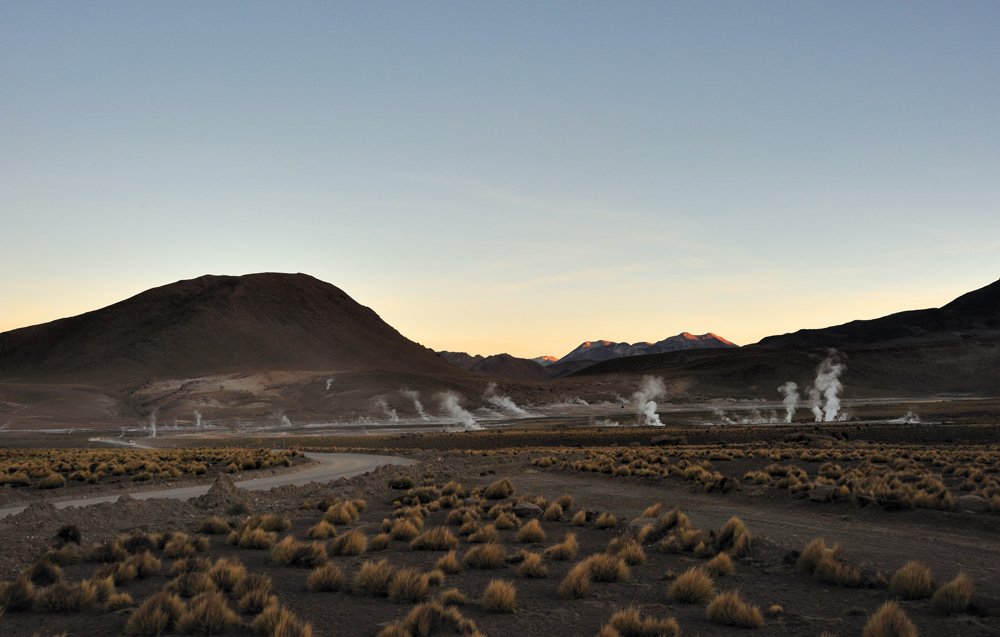
Frozen tourists try warm-up around geysers.
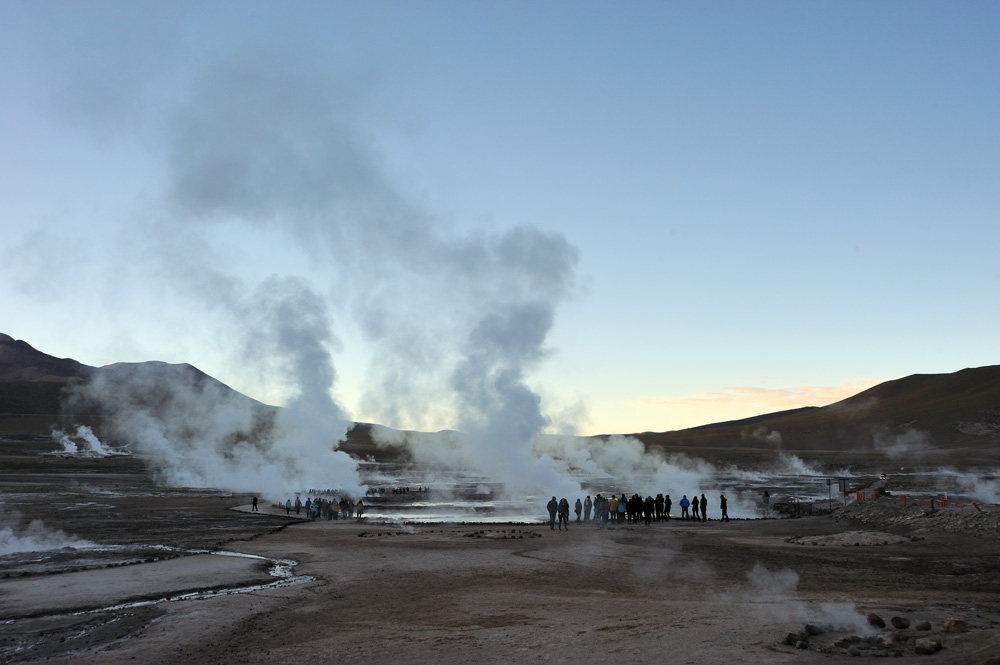
Only gulls are happy, they are allowed to stay in hot water.
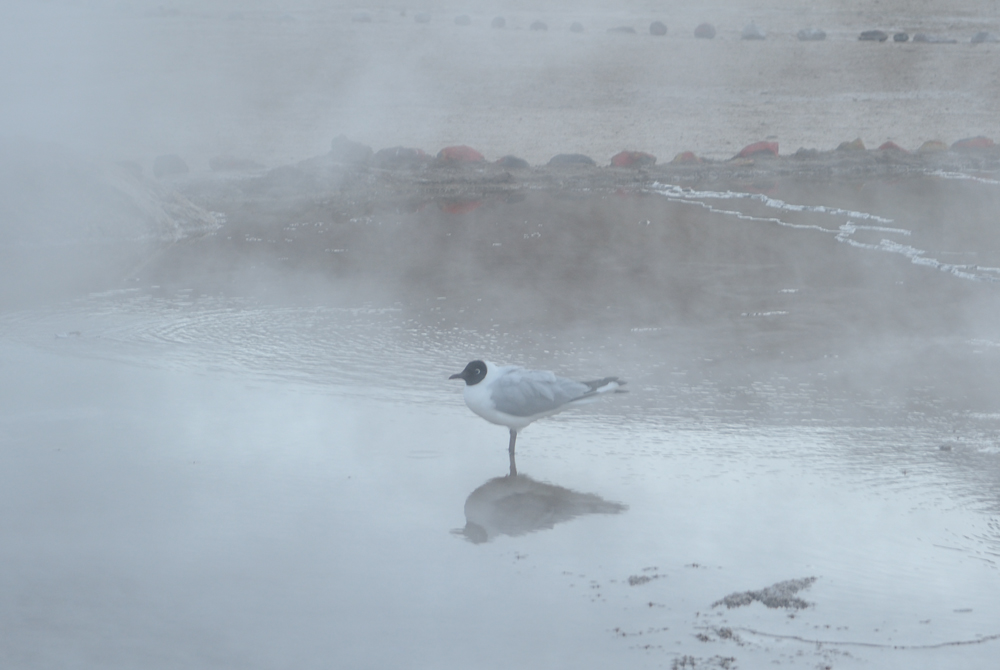
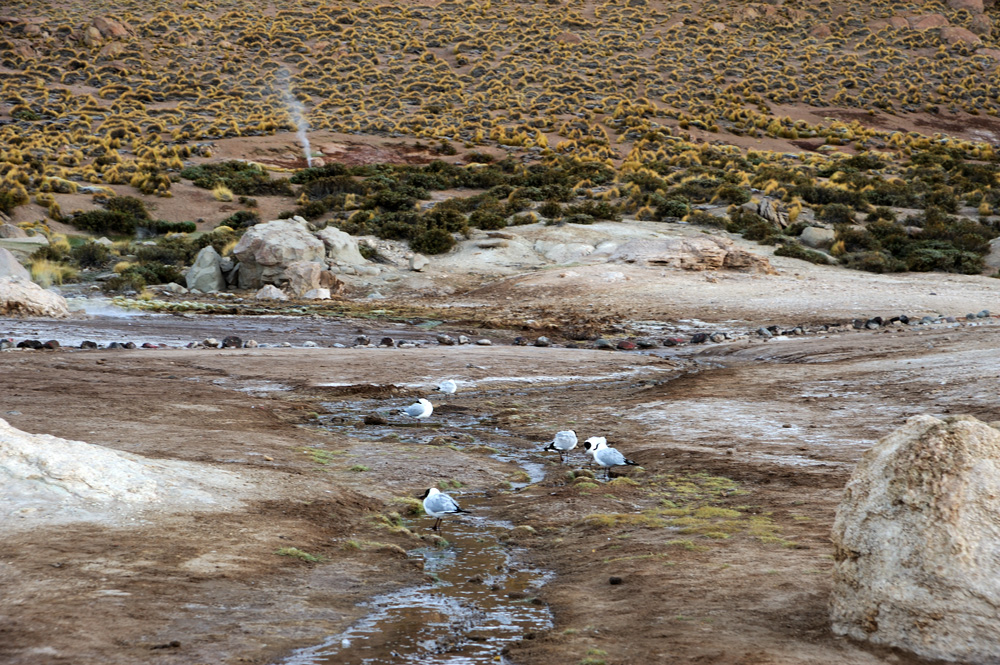
Sunlight appeared on the top of the neighbour volcano, so there is a chance that we survive until it comes down to us.
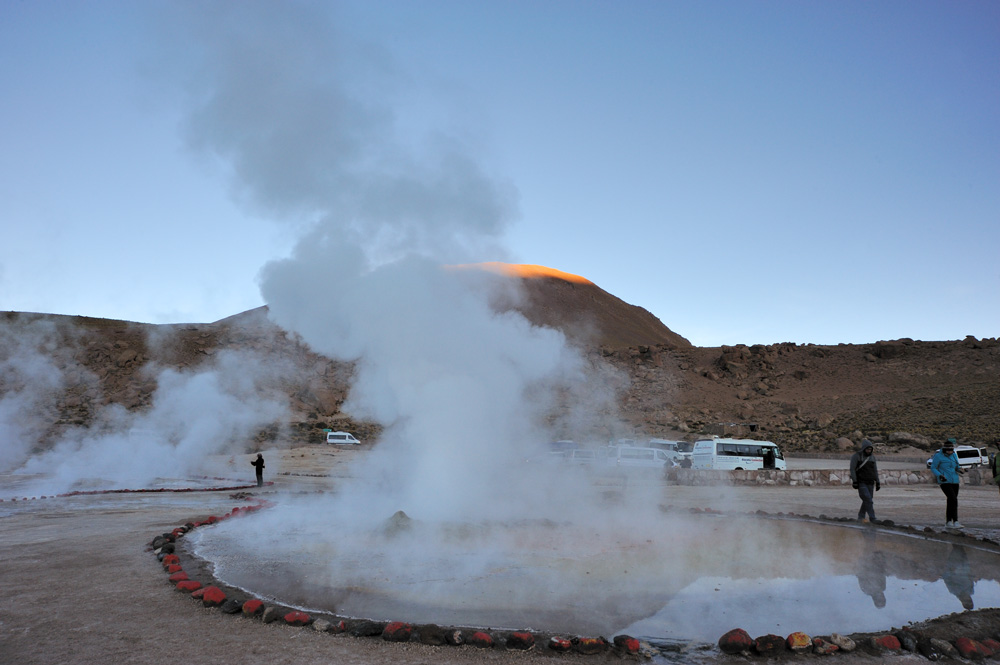
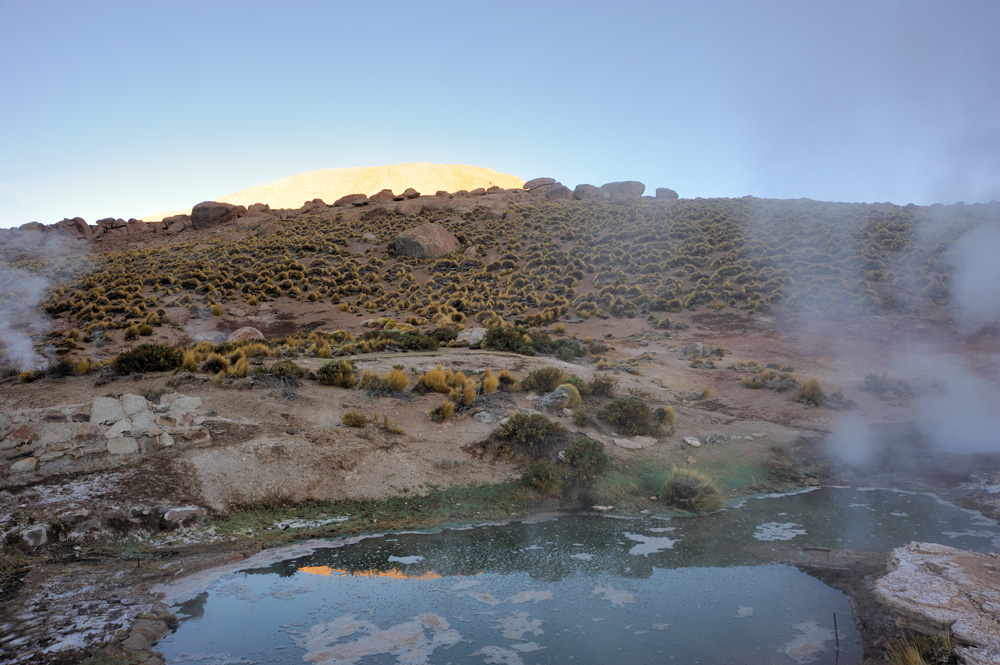
Steam and bubbling around us.
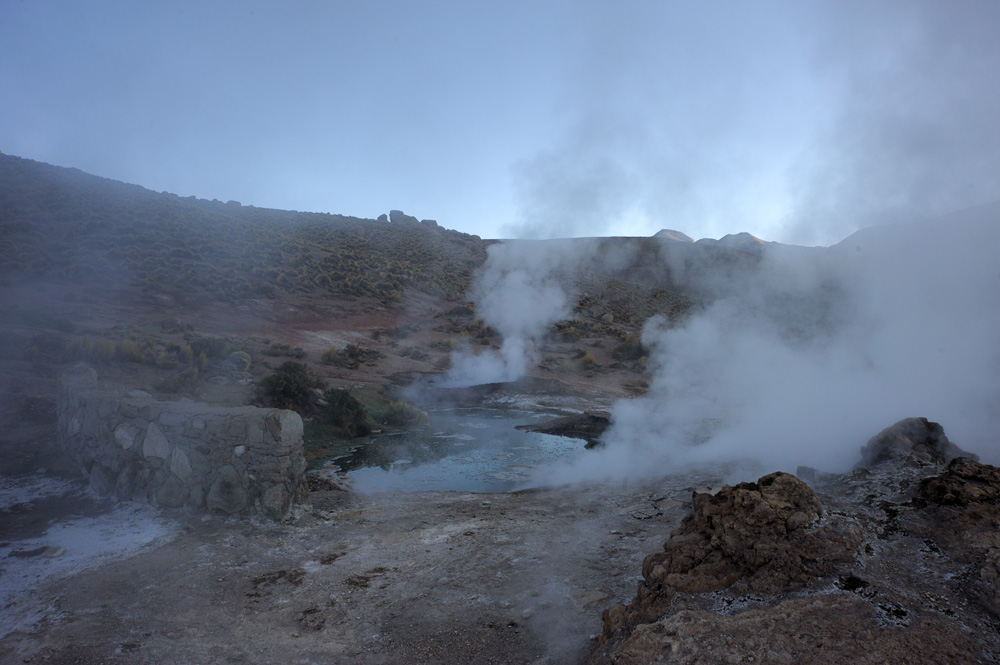
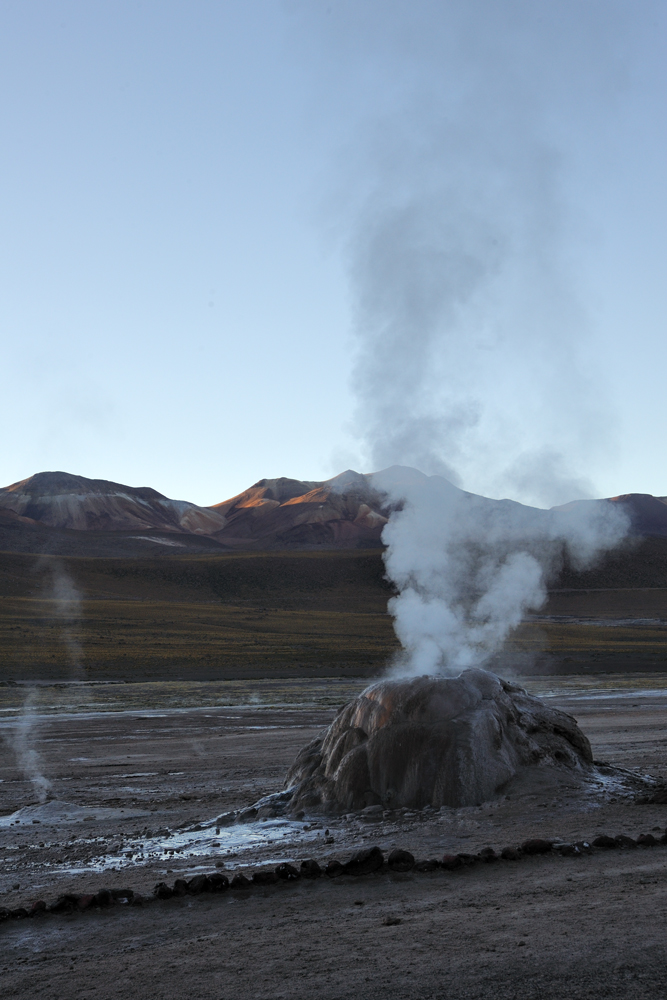
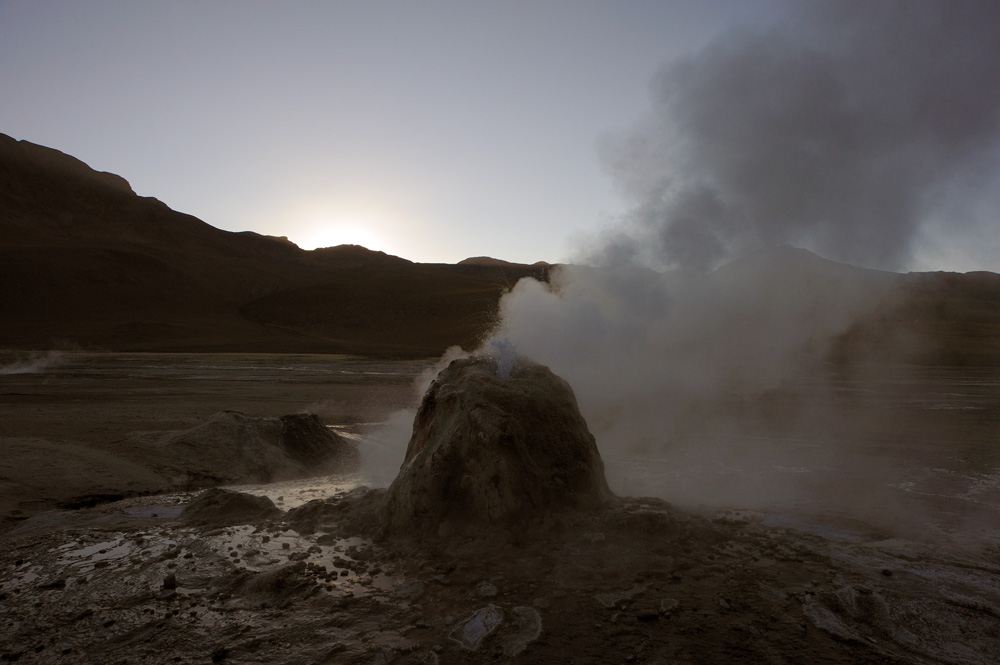
Some are quite erotic.
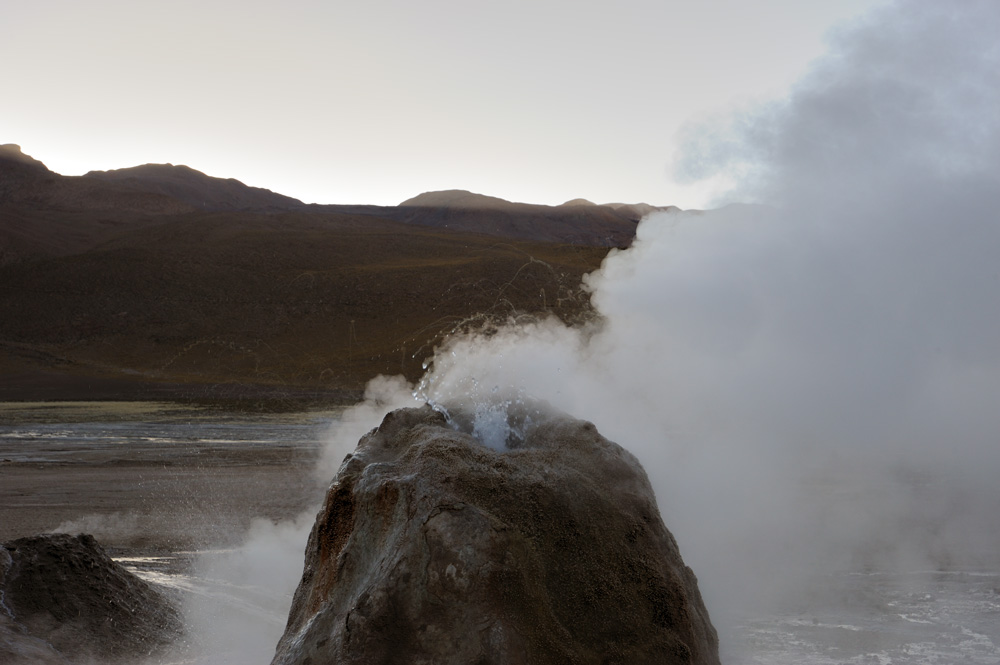
During the whole XX century until 2009 people tried to force El Tatio to give help to humankind not only by money from tourists but also by geothermal energy production. Unsuccessfully. Every time something didn’t work. Now only some equipment left.
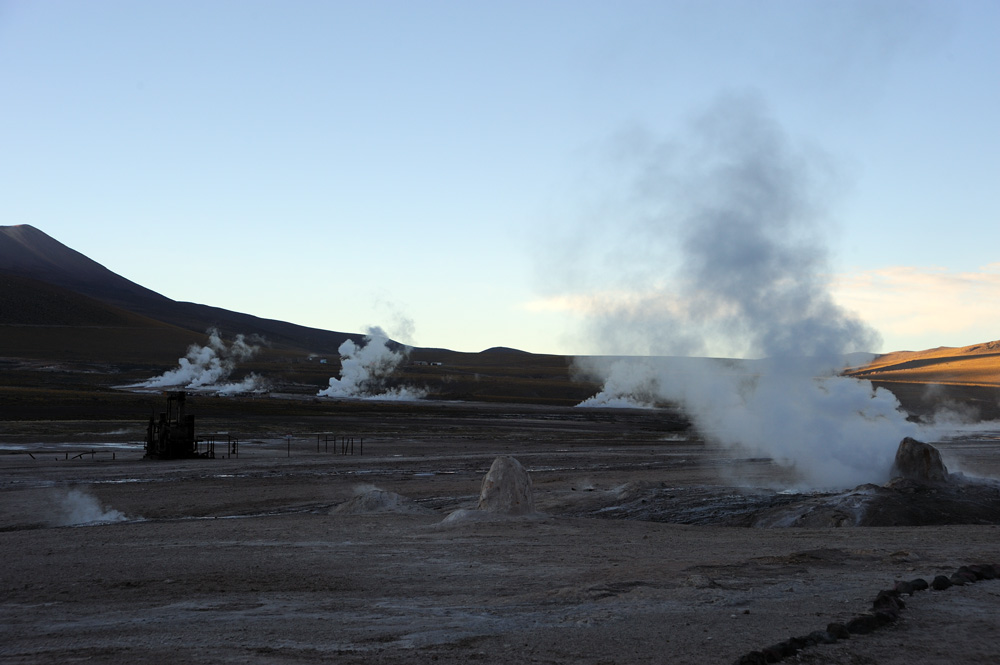
All hot spring,
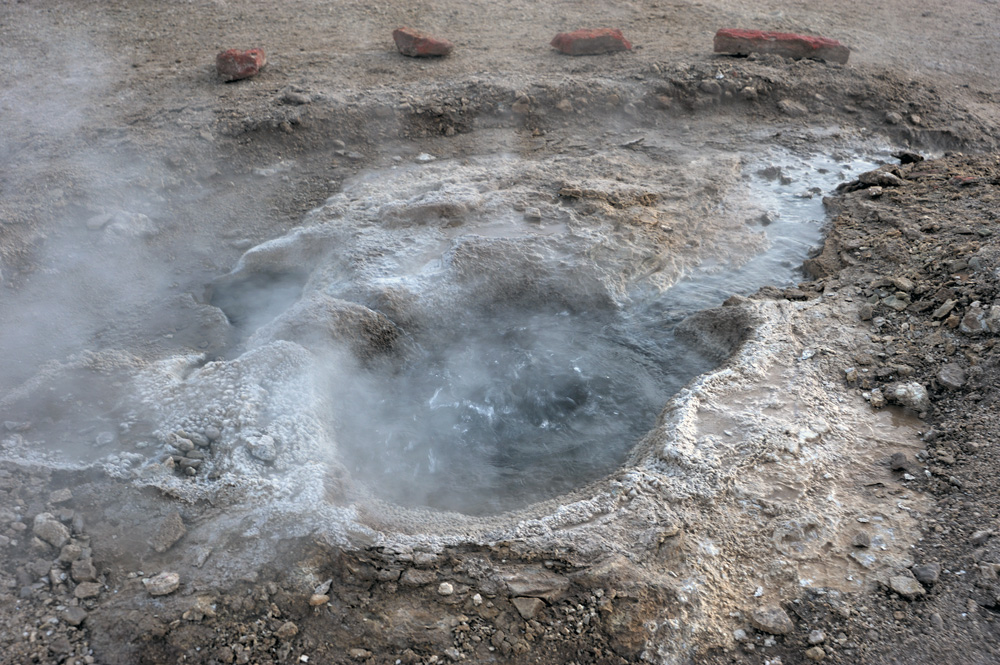
brooks,
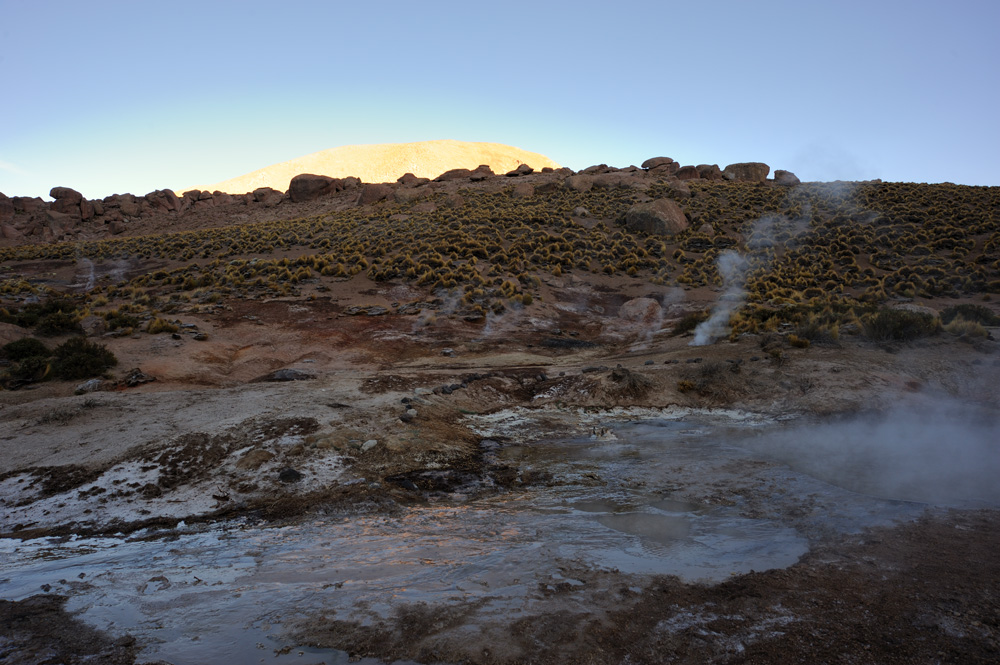
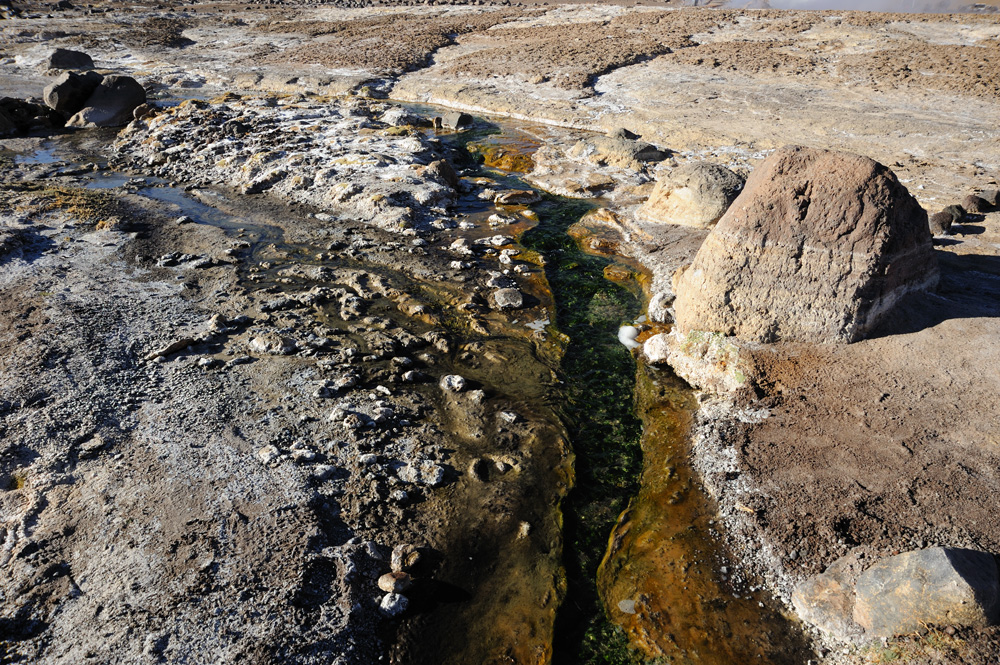
and rivers
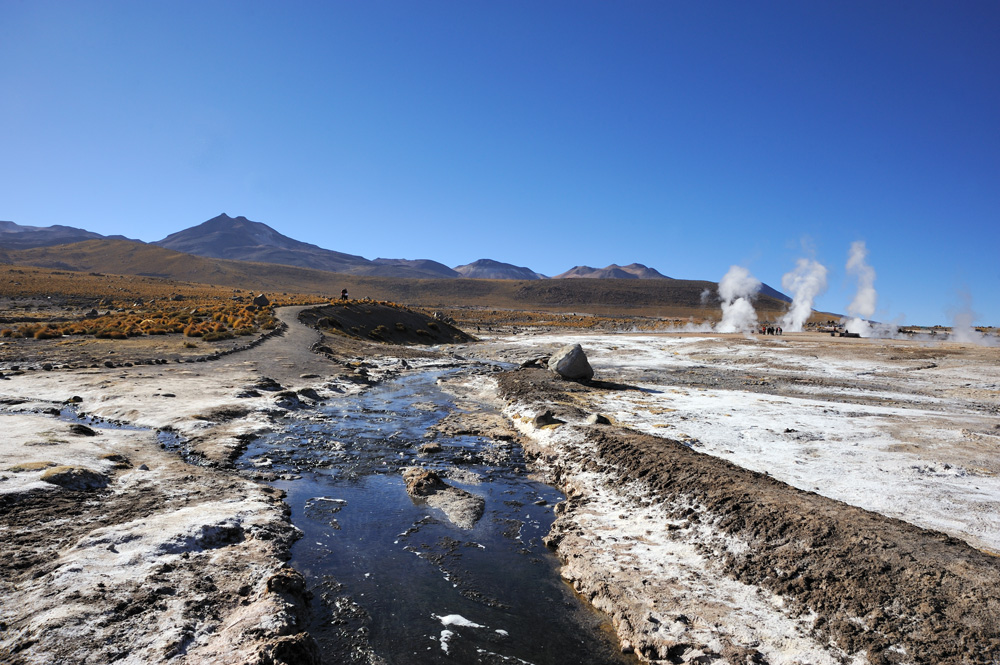
give their water to Rio Salado, the biggest feeder of Loa Rivet that brings its waters to the ocean. They bring not only water but also a lot of arsenic.
Sun! It immediately brings warmth and joy.
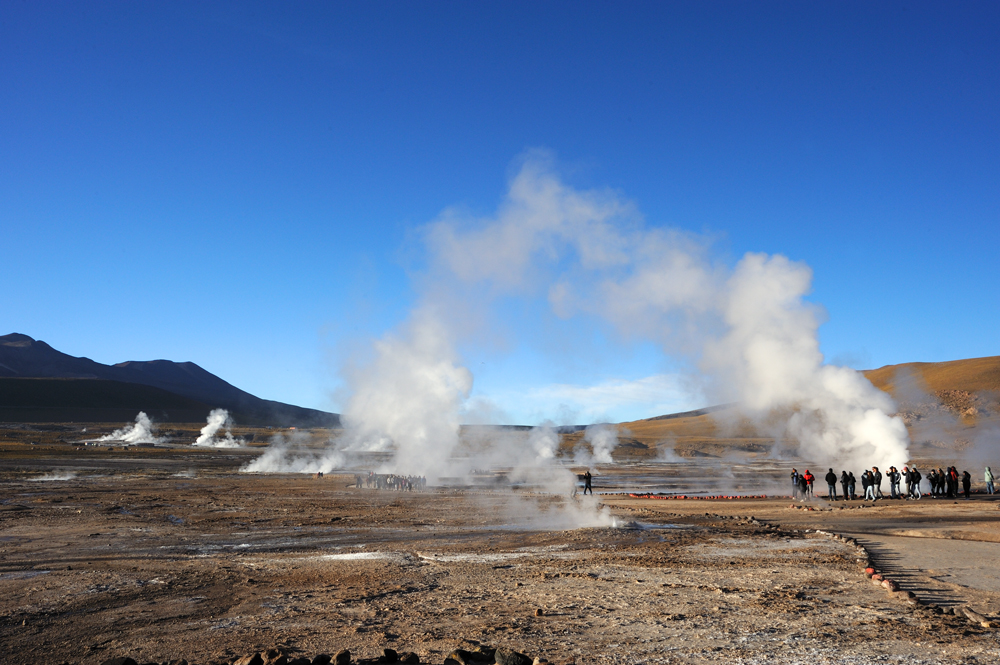
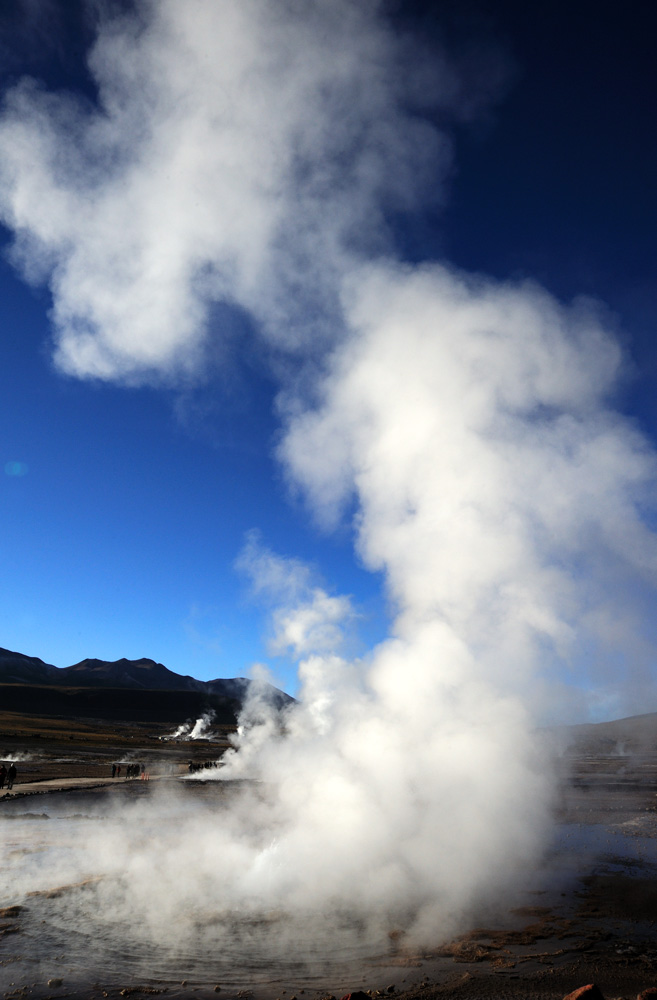
The working day of the geysers comes to the end.
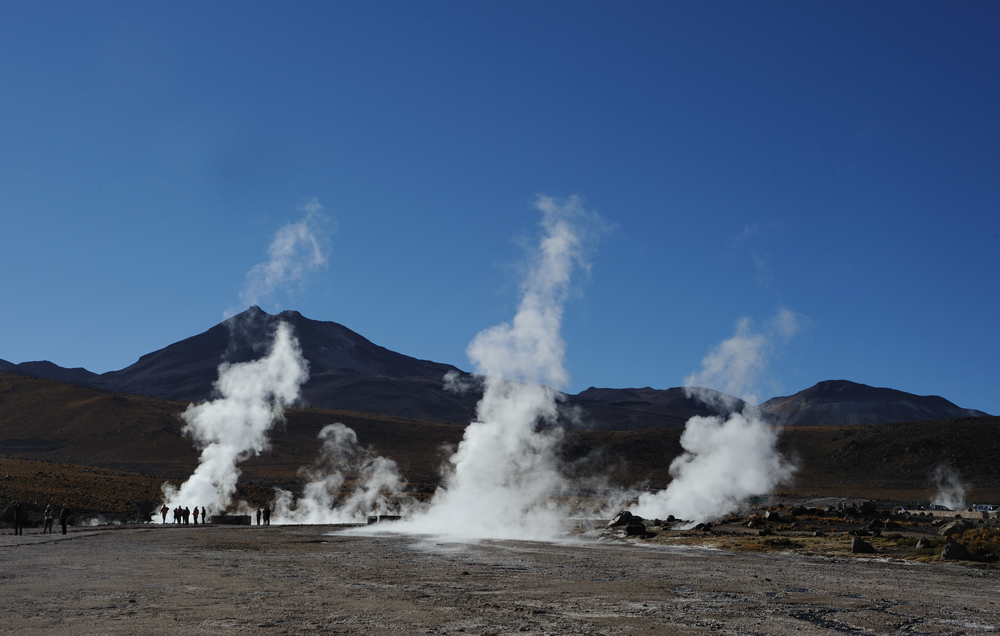
Only some springs are bubbling.
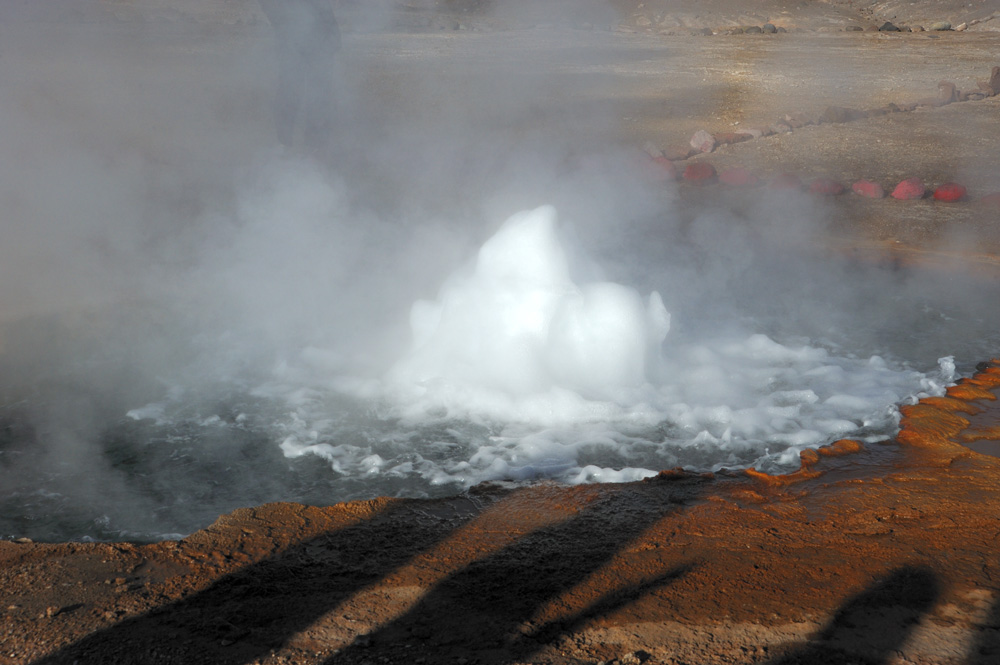
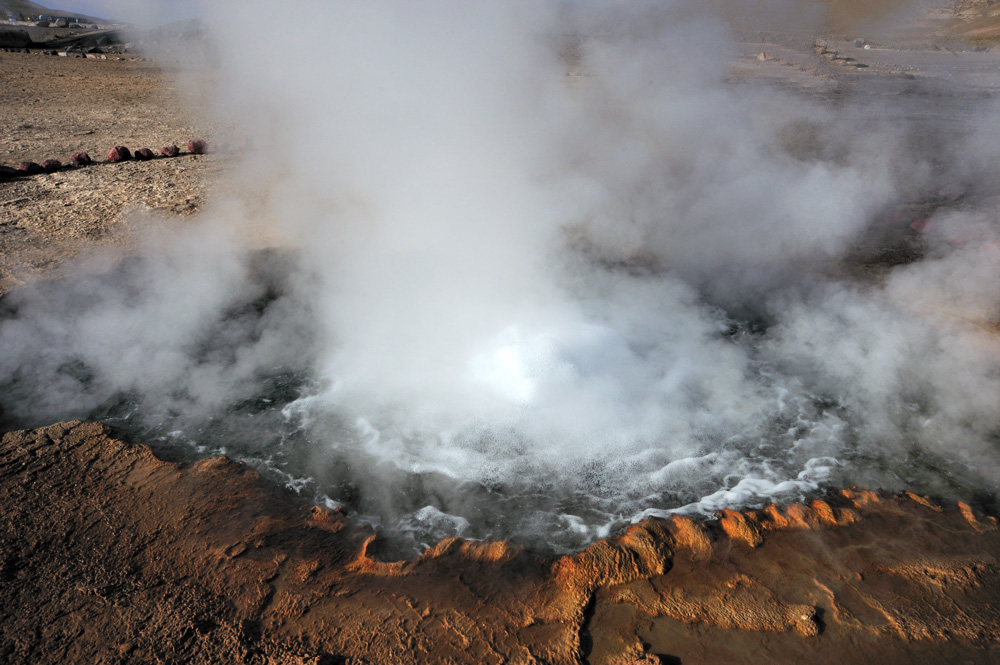
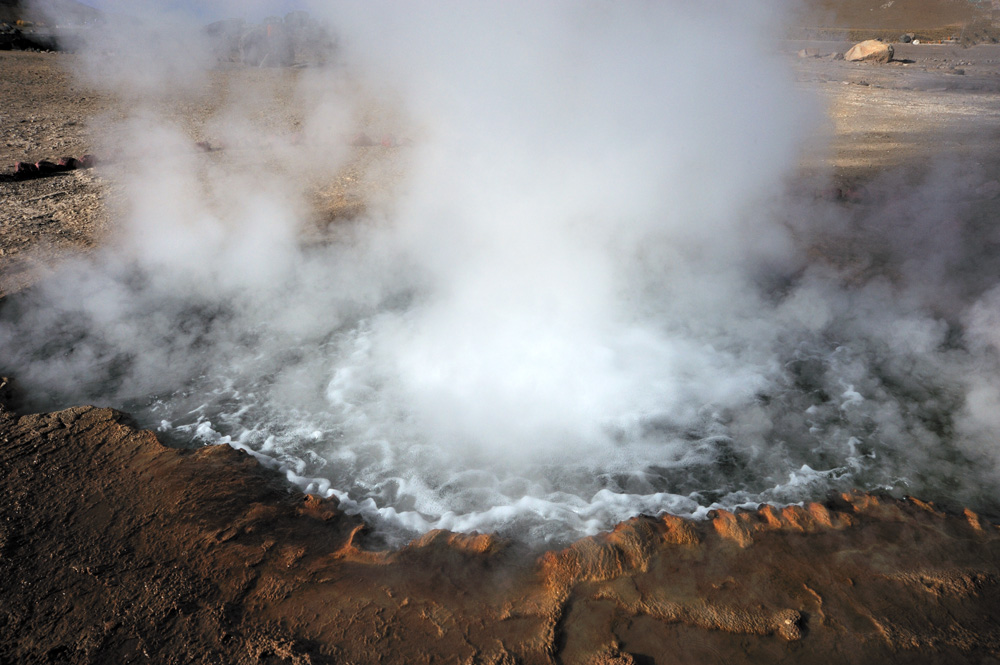
Despite the high altitude, huge temperature drops, salt and other unhealthy conditions, life exists in this place.
Plants grow
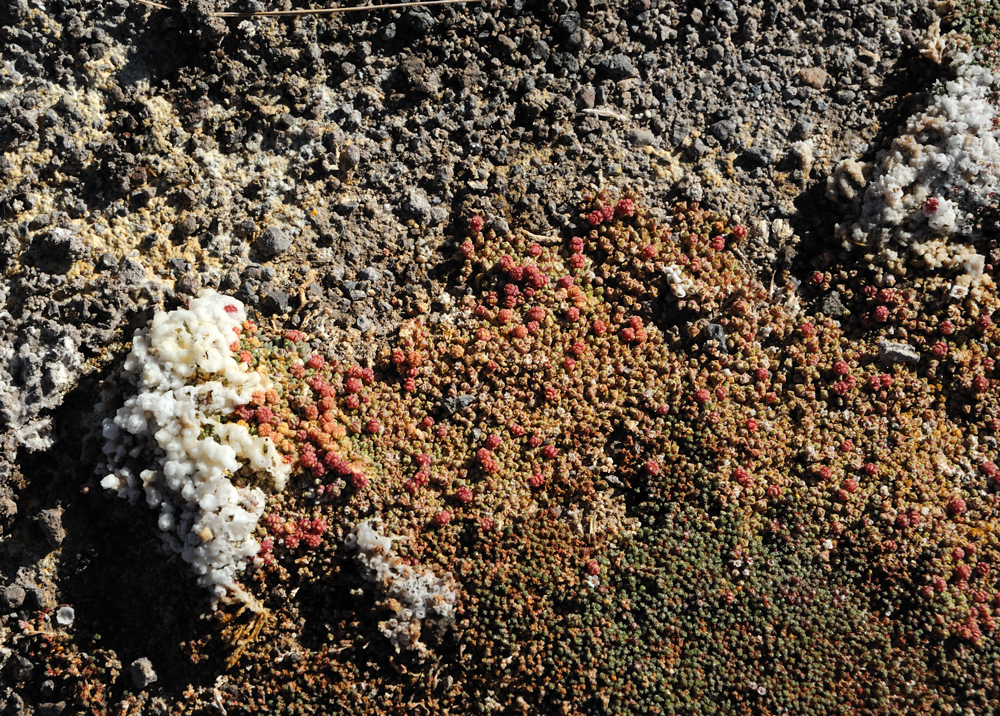
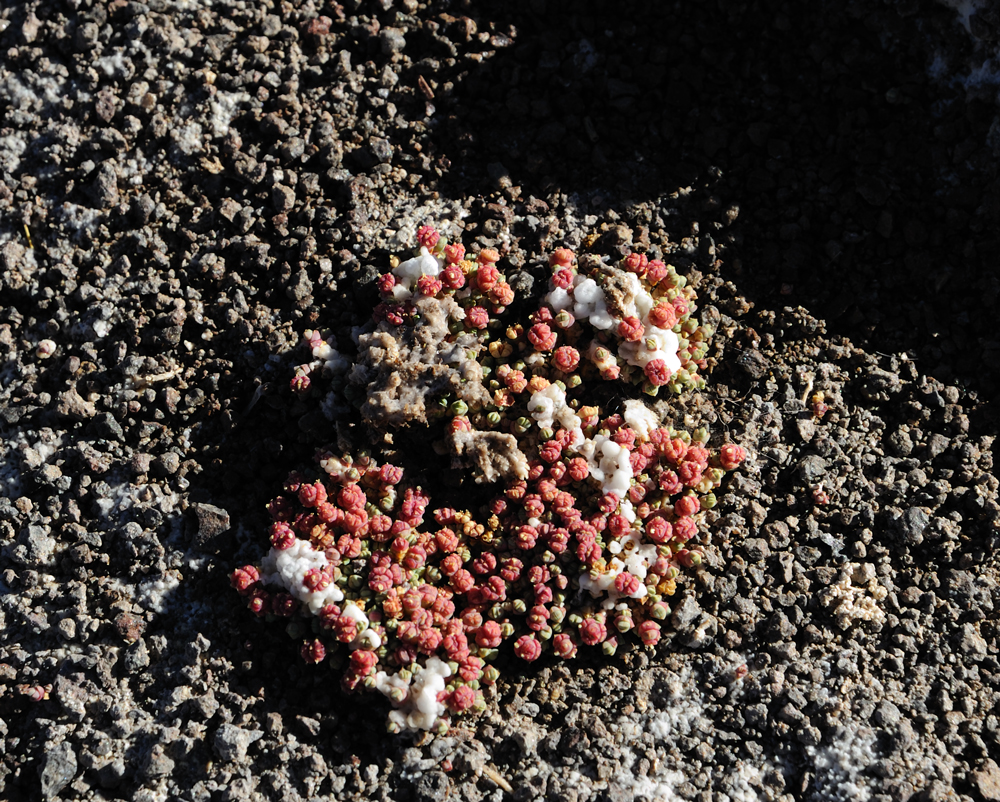
just under salt crust.
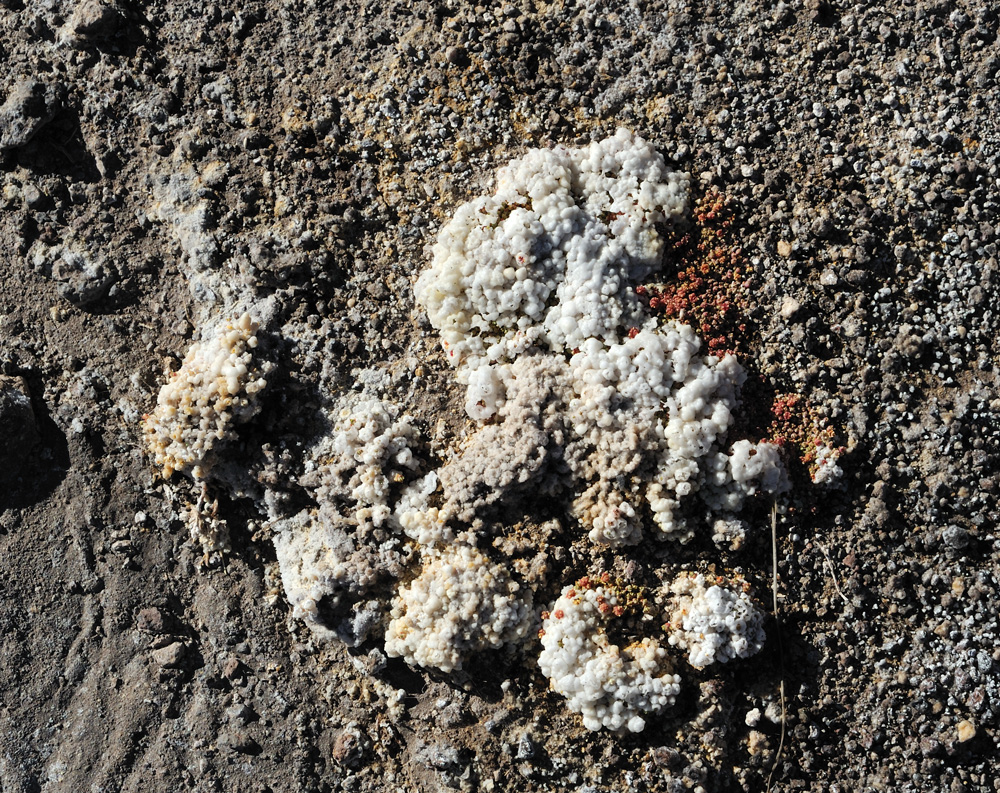
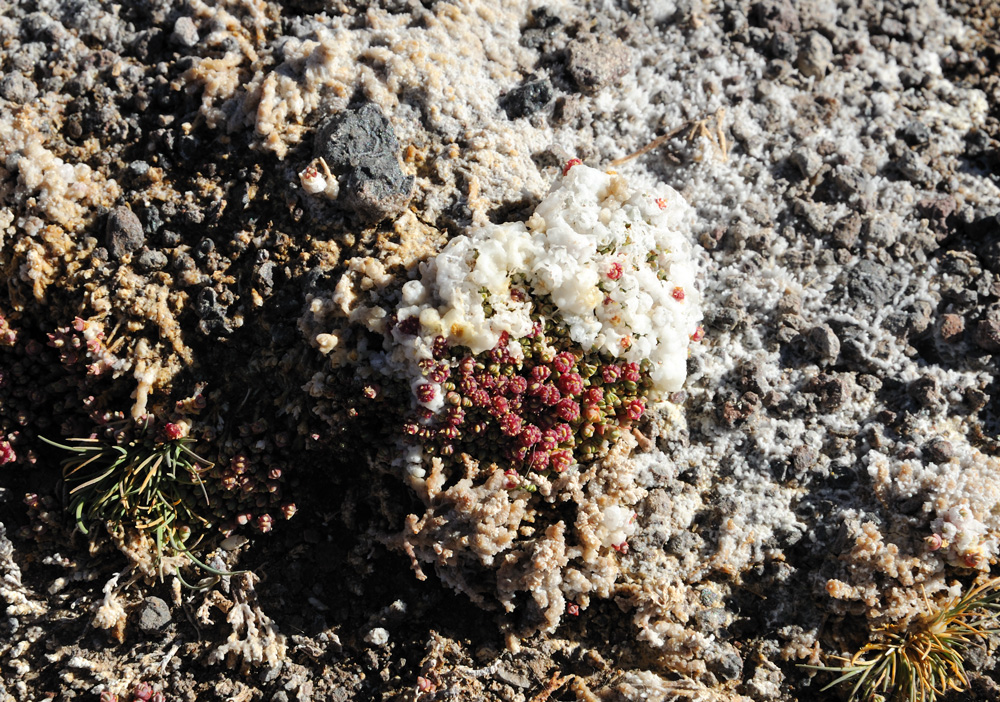
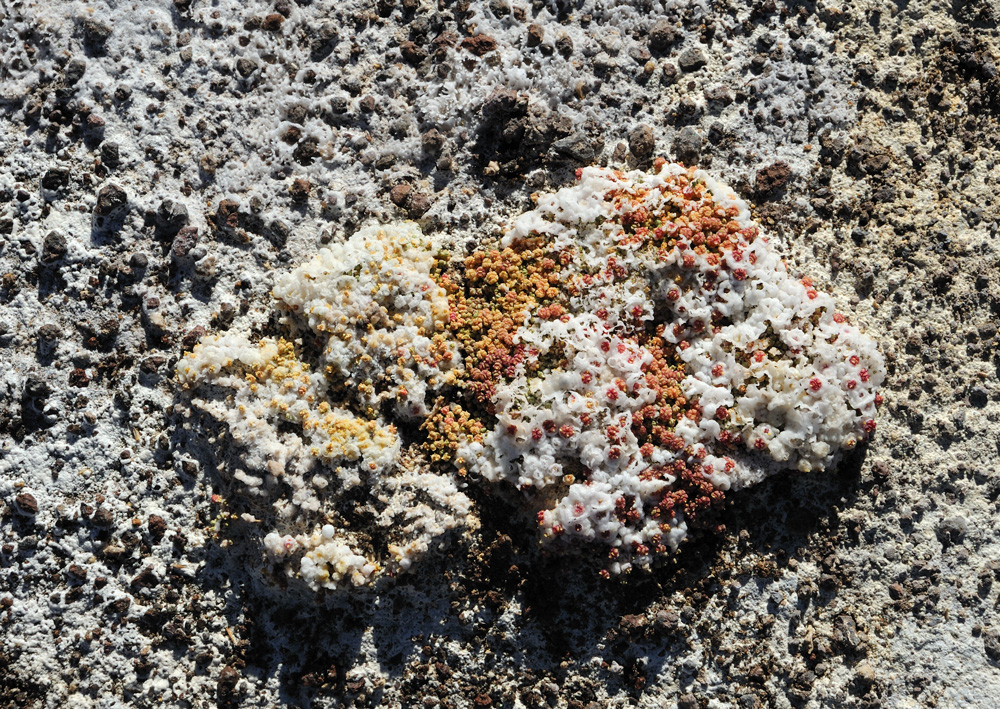
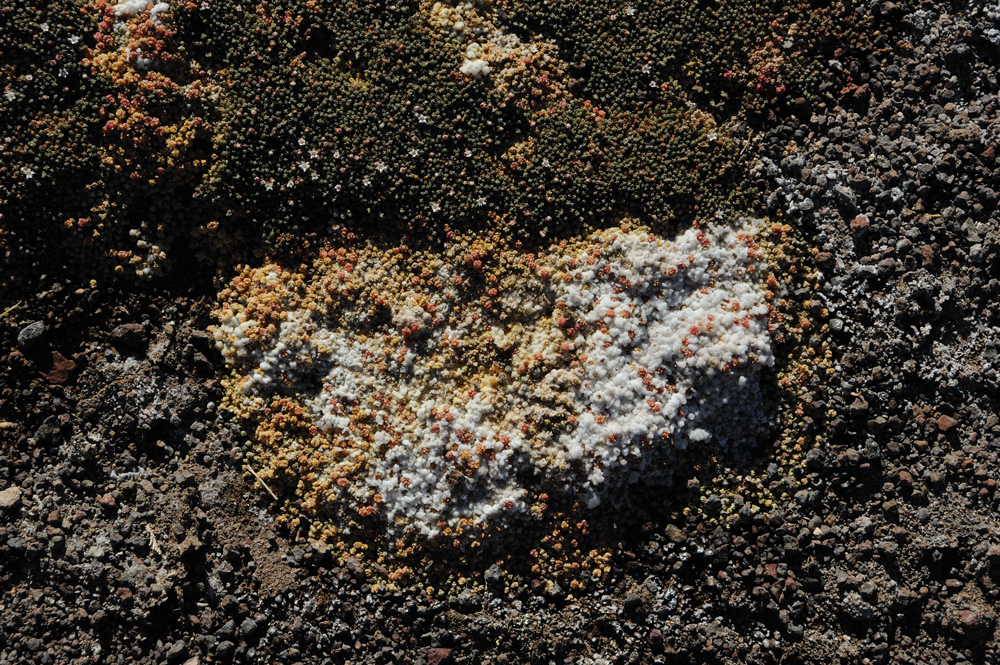
And even bloom.
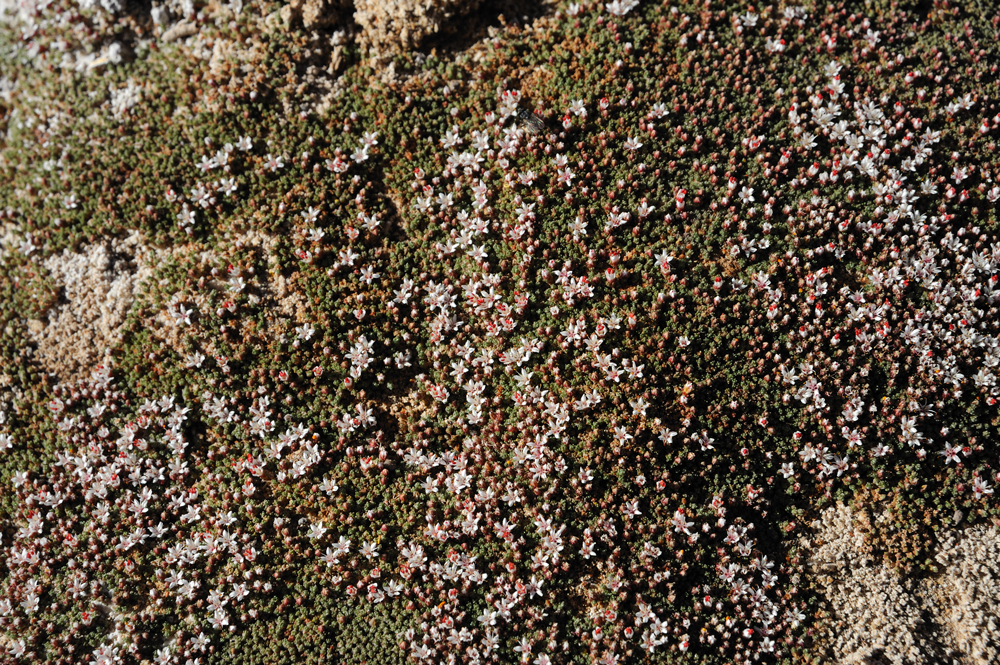
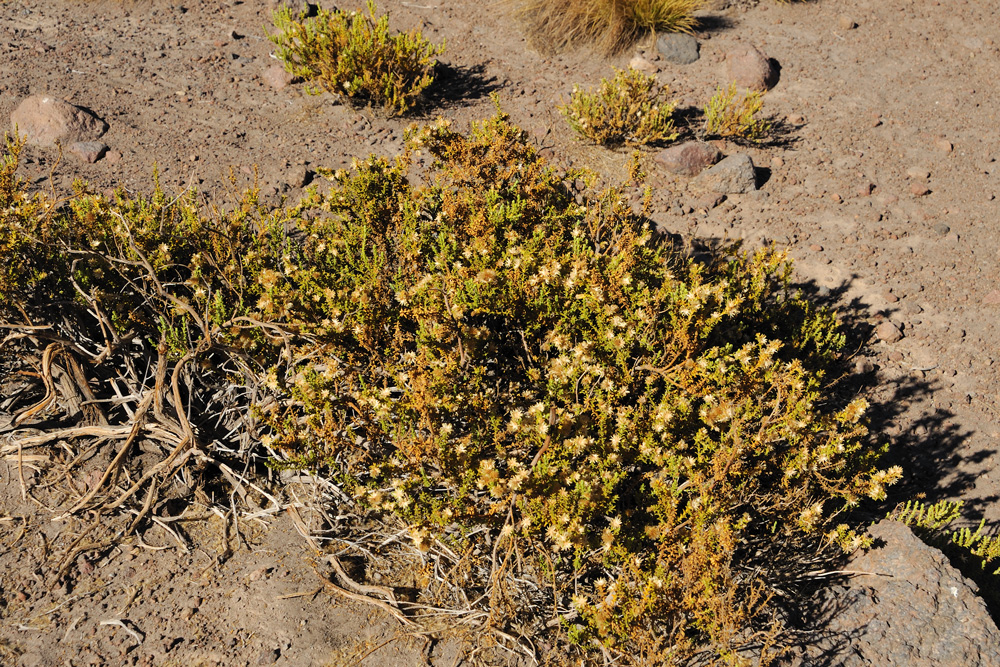
Sun is hight, time to get off warm clothes.
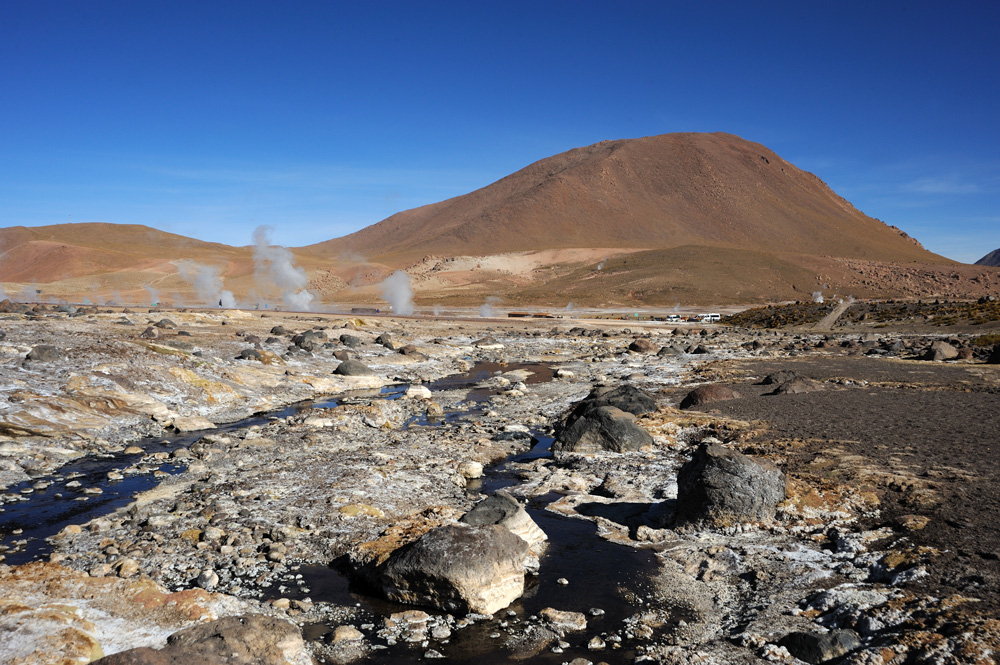
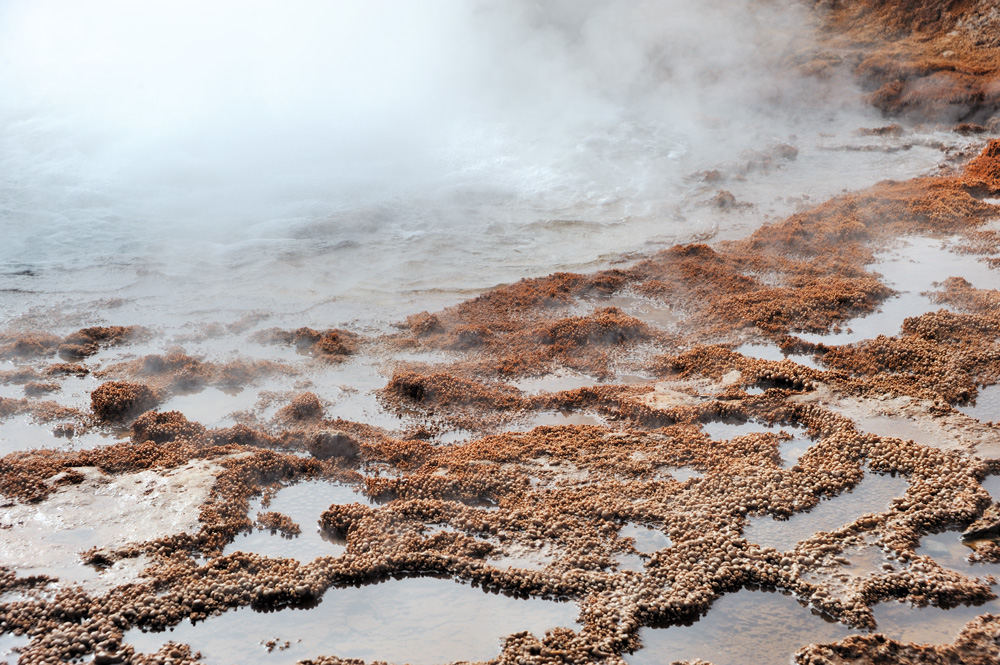
Seagull left geysers and drying under the sun.
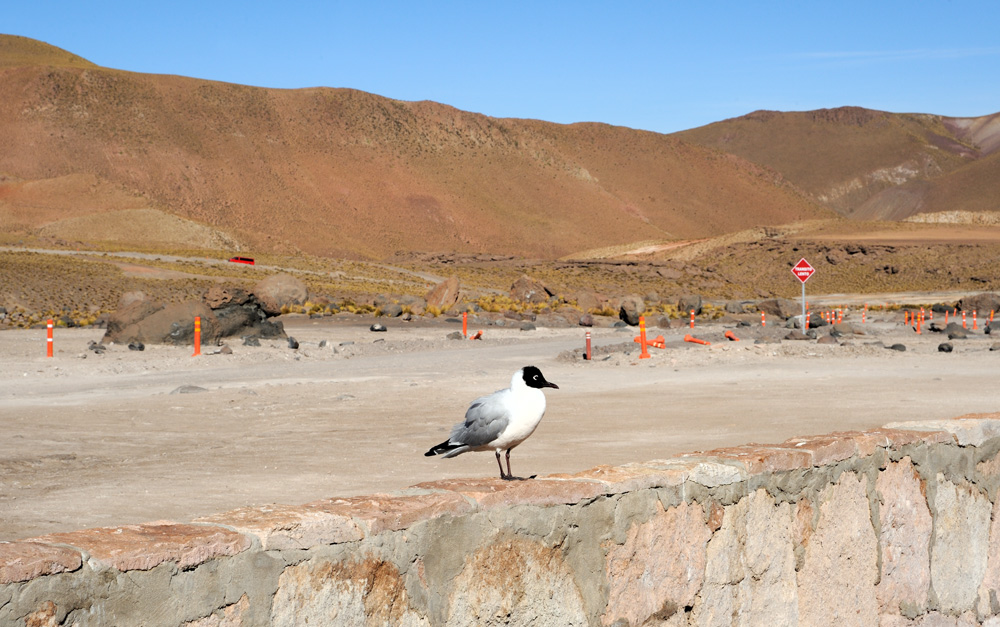
Besides the geysers and hot springs, there are some warm ponds in the valley.
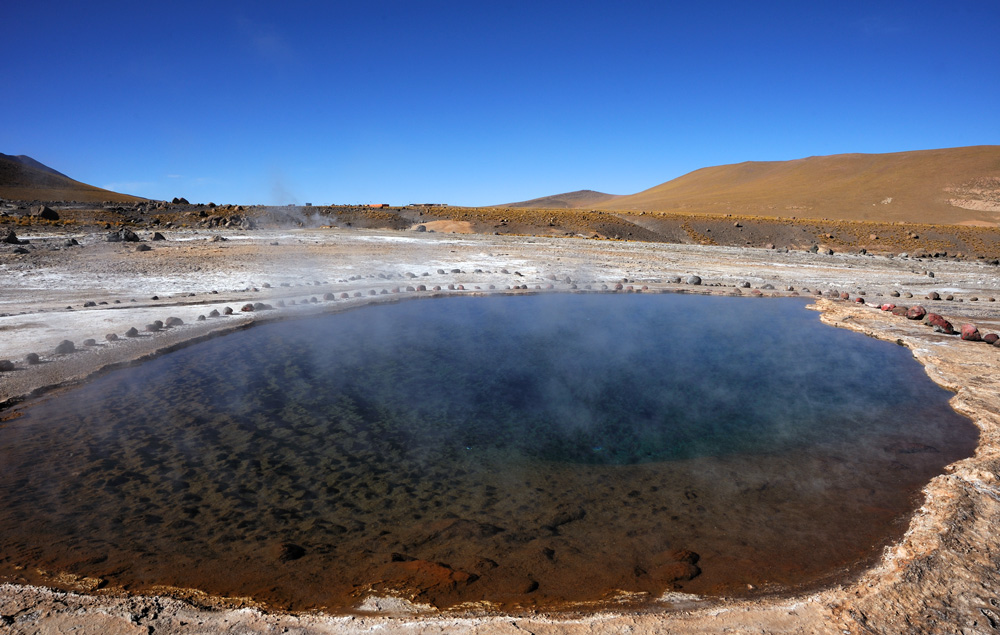
One can be used for bathing, and we used it before the way back.
To be continue …